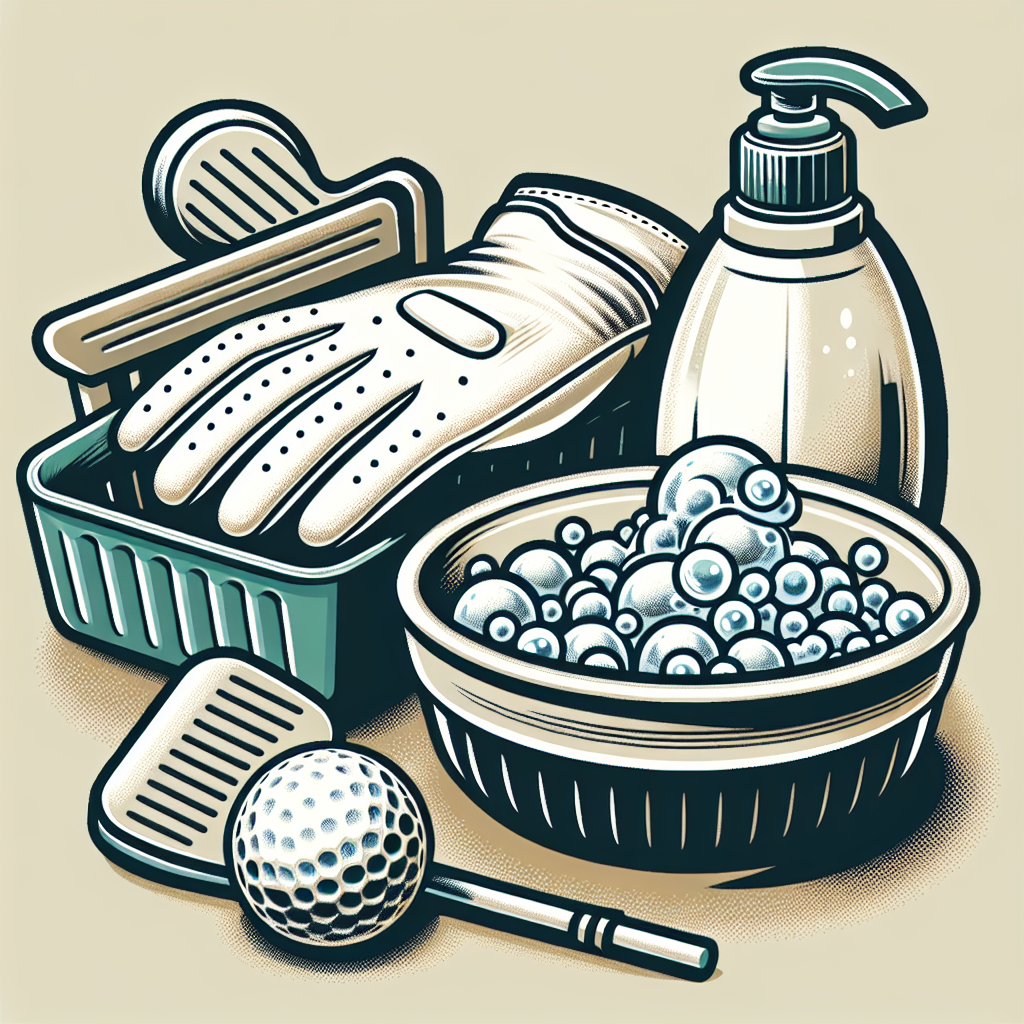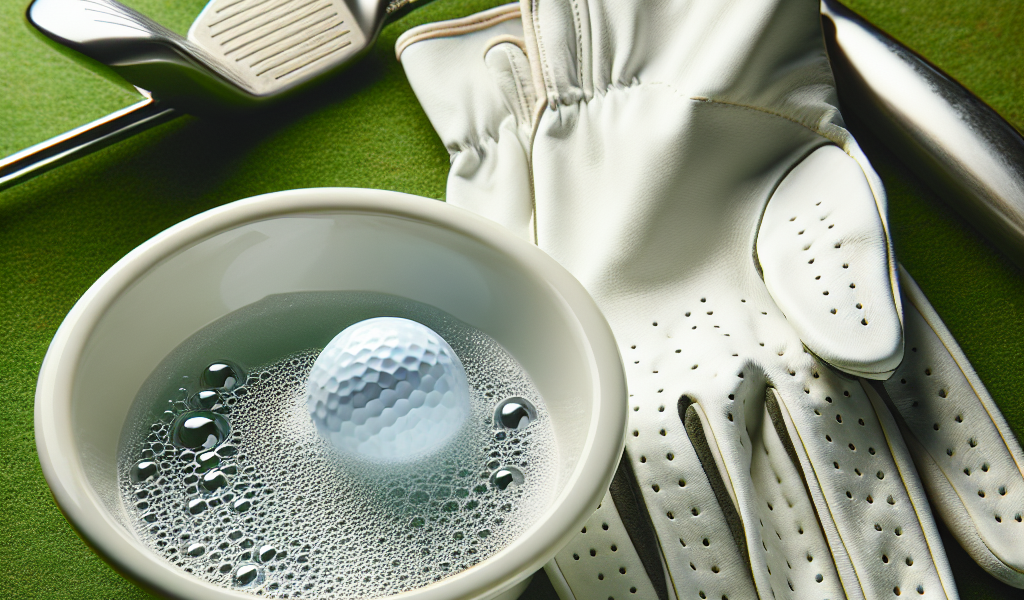The Proper Technique: How to Wash a Golf Glove
Exploring the sport of golf in its many facets, we delve into not only the technical aspects like understanding handicaps and mastering the perfect grip but also touch upon the more nuanced aspects such as the financial investment for tools of the trade like golf clubs and carts. We even assess the health benefits like weight loss associated with this widely loved sport. However, a pivotal yet overlooked part of the golfer’s arsenal requires detailed attention – the golf glove. We outline the proper technique to wash a golf glove and ensure its longevity, thereby offering a comprehensive guide to the sport – from playing techniques, rules, cost implications to maintainance of equipment.
Understanding the Importance of a Golf Glove
Role of a golf glove in a game
A golf glove is an important part of our golf equipment. It serves as a protective gear and enhances the grip. A stronger grip on the club tends to improve our control over the shot. Additionally, golf gloves provide a good safeguard against blisters and callouses that can occur on our hands from repeated swings.
Right hand for wearing a golf glove
Traditionally, we wear a golf glove on the ‘lead’ hand – for right-handed players, this would be the left hand, while for left-handed players, it would be the right hand. This is because the lead hand has a significant role in grip control, and the rough texture of the glove offers more gripping power than skin alone.
Materials used for manufacturing golf gloves
Golf gloves are typically made from leather, synthetic materials, or a combination of both. Leather gloves, while more expensive, offer a superior feel and fit, adapting to the hand’s shape. Conversely, synthetic gloves are more durable, less expensive, and offer better resistance to weather conditions but may lag in terms of comfort and fit.
Identifying When to Wash a Golf Glove
Signs your golf glove needs a wash
Over time, a golf glove will accumulate sweat, dirt, and oils from our hands that can affect its texture and performance. Signs that a golf glove needs a wash can include discoloration, a hardened texture, or an unpleasant smell.
Frequency of cleaning a golf glove based on usage and wear
Frequency of cleaning a golf glove largely depends on usage. If we use it extensively, it may be beneficial to wash it after every few rounds. Furthermore, if the glove becomes exceedingly dirty or starts to harden, it’s a clear indication that it needs a wash.

Materials Needed for Washing Golf Glove
Suitable detergents and fabric cleaners
A mild detergent or a hand wash fabric cleaner works best for washing a golf glove. Remember, harsh detergents can damage the fabric and lessen the glove’s lifespan.
Using warm or cold water
We should always use cold or lukewarm water to wash golf gloves. Hot water could alter the glove’s shape and fit.
Bowl or basin for soaking
A bowl or small basin is ideal for soaking and washing the glove. The soaking process helps remove embedded dirt and sweat from the glove.
Soft cloth for delicate washing
A soft cloth is needed for the delicate washing of the golf glove. It helps clean while preventing any damage to the glove fabric.
Preparing the Golf Glove for Washing
Removing any debris or loose dirt
Before beginning the washing process, we should remove any loose dirt or debris from the glove. This can be done by gently tapping or shaking the glove.
Checking for any damages to the glove
Before washing, we should inspect the glove for any damages. Look for any tears, holes, or loose seams. If any minor damages are found, consider repairing them before washing.
Making sure the glove is fully expanded and not folded
To ensure an effective wash, it is crucial that the glove is fully expanded, not folded or crumpled. This enables the cleaning solution to reach all areas of the glove.
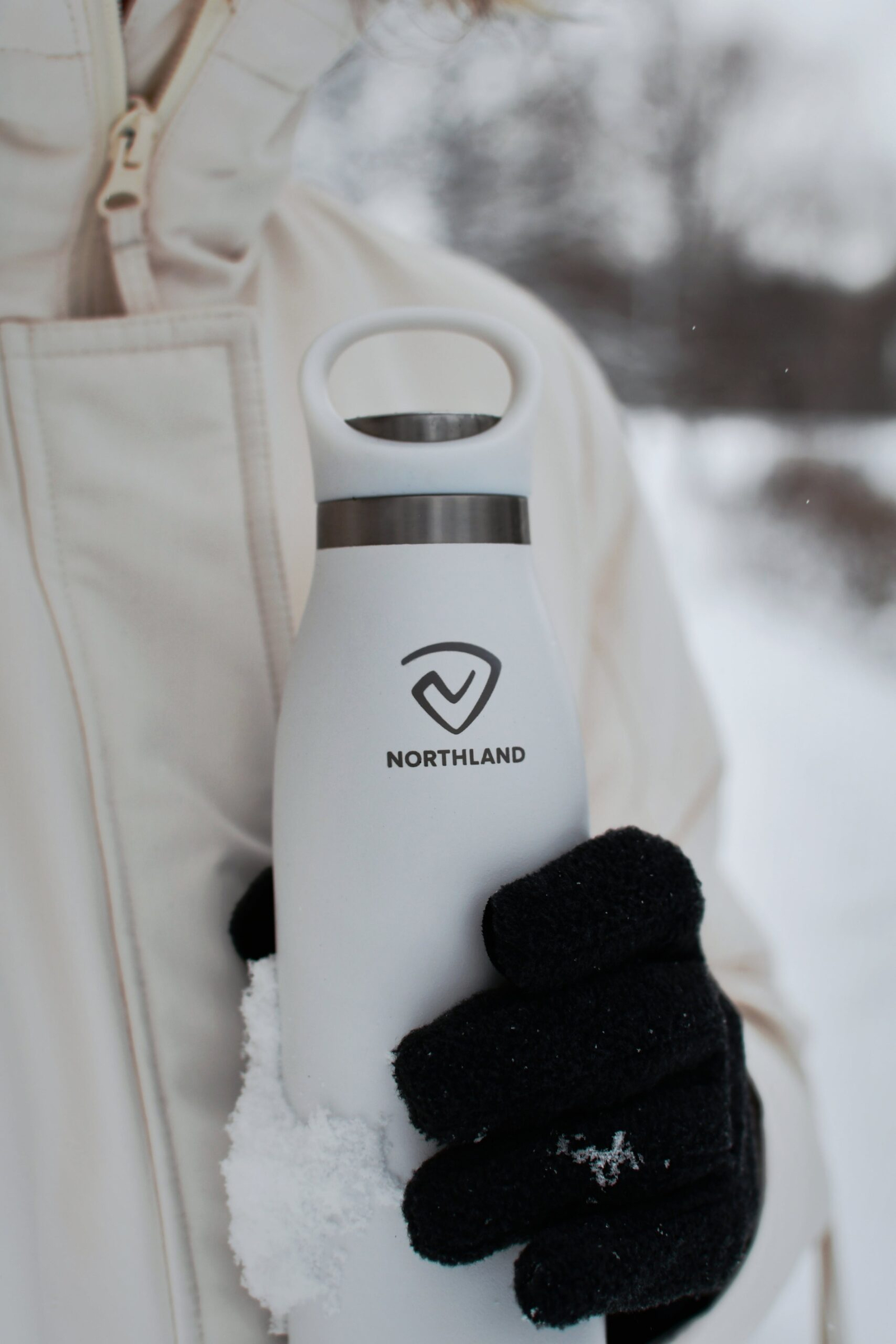
Hand Washing Techniques for Golf Gloves
Proper soaking time in mixture of water and detergent
Soaking is an essential part of the washing procedure. After mixing detergent in water, we soak the glove for around 10–15 minutes. This allows dirt and sweat stains to loosen up.
Gently scrubbing a golf glove
Next, using our hands or a soft cloth, we gently scrub the glove. Focus on areas with the most stains or sweat marks, usually in the palm and finger areas.
Rinsing process after washing
Rinse the glove thoroughly in warm water after washing, ensuring all remnants of soap or detergent are removed. A thorough rinse helps maintain the glove’s flexibility and prevents any potential skin irritation in future uses.
Machine Washing Techniques for Golf Gloves
Proper settings for machine wash
If we opt to machine wash a golf glove, it’s important to use a gentle, cold cycle to prevent any damage or shrinking.
Avoiding the dryer – air drying only
Golf gloves should never be tumble dried, as high heat can cause the glove’s material to harden, shrink, or lose shape. Always opt for air drying.
Using a laundry bag for added protection
It’s advisable to use a laundry bag when machine washing a golf glove. The bag acts as a protective layer against spinning and twisting that can potentially damage the glove.
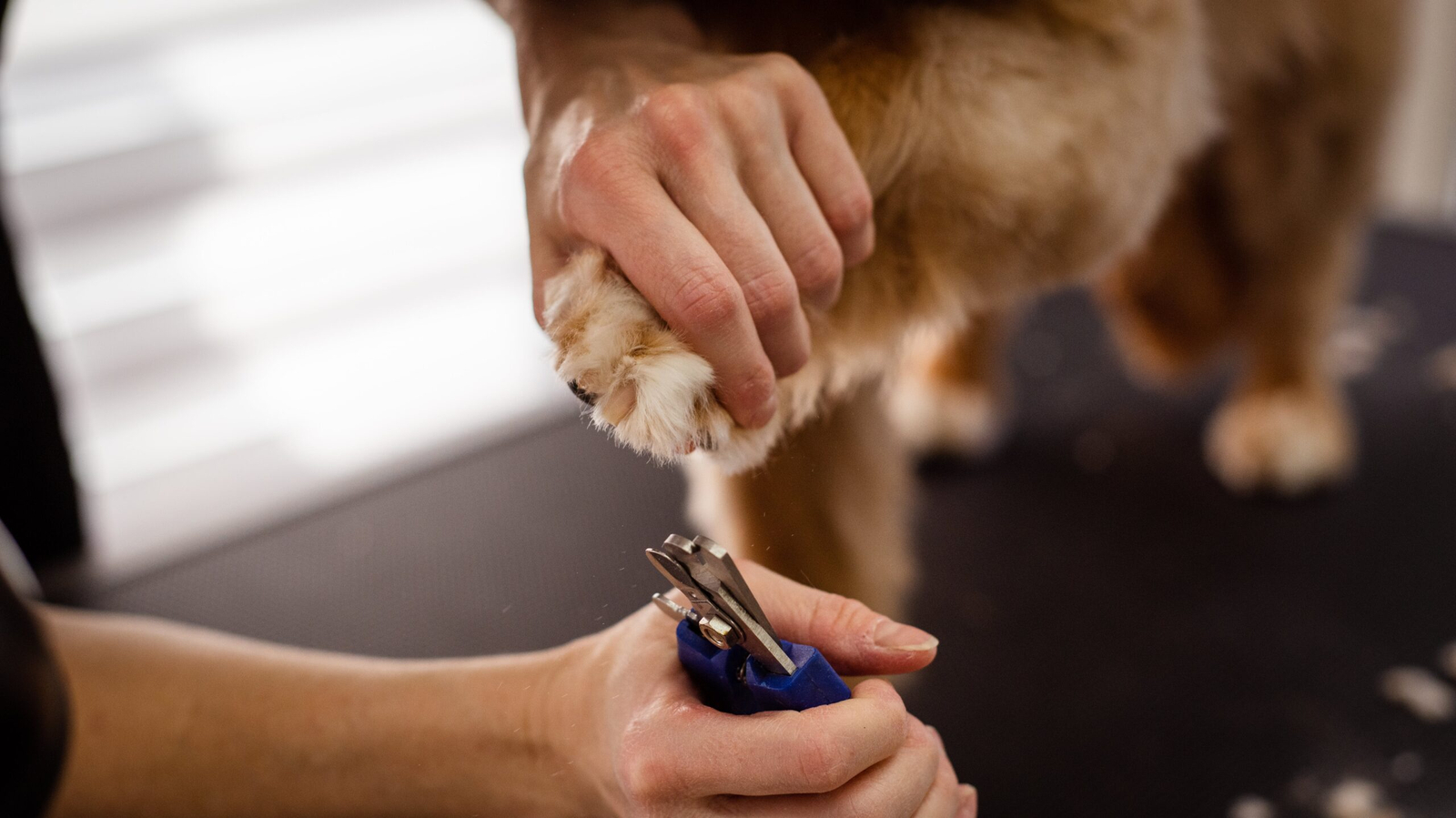
Drying a Golf Glove
Air drying vs direct sun exposure
While air drying is the preferred method, avoid exposing the glove to direct sunlight. Excessive exposure to sunlight can cause discoloration and hardening of the glove’s material over time.
Drying time for leather and synthetic gloves
Leather gloves usually require longer dry times than synthetic ones. It’s essential to give enough drying time as storing a damp or wet glove can lead to unpleasant odors or even mold growth.
Ensuring gloves are fully dry before storage
Before storing, we should ensure that the glove is completely dry. Any traces of moisture can tarnish the glove’s material and potentially lead to the growth of bacteria or mold.
Storing a Golf Glove Post-Wash
Correct way to fold a golf glove
Once dry, the golf glove should be carefully folded. Start by laying the glove flat, folding the thumb in over the palm, and then folding the fingers over the thumb, ensuring not to bend or crease the glove excessively.
Choosing a dry and cool storage location
The glove should be stored in a cool, dry place away from any dampness, direct sunlight, or excessive heat. These conditions can prematurely deteriorate the glove’s material.
Properly packing glove in golf bag
When not in use, it’s advisable to store the golf glove back in its original packaging or a glove sleeve, and then place it inside the golf bag. This helps maintain the glove’s shape and durability.
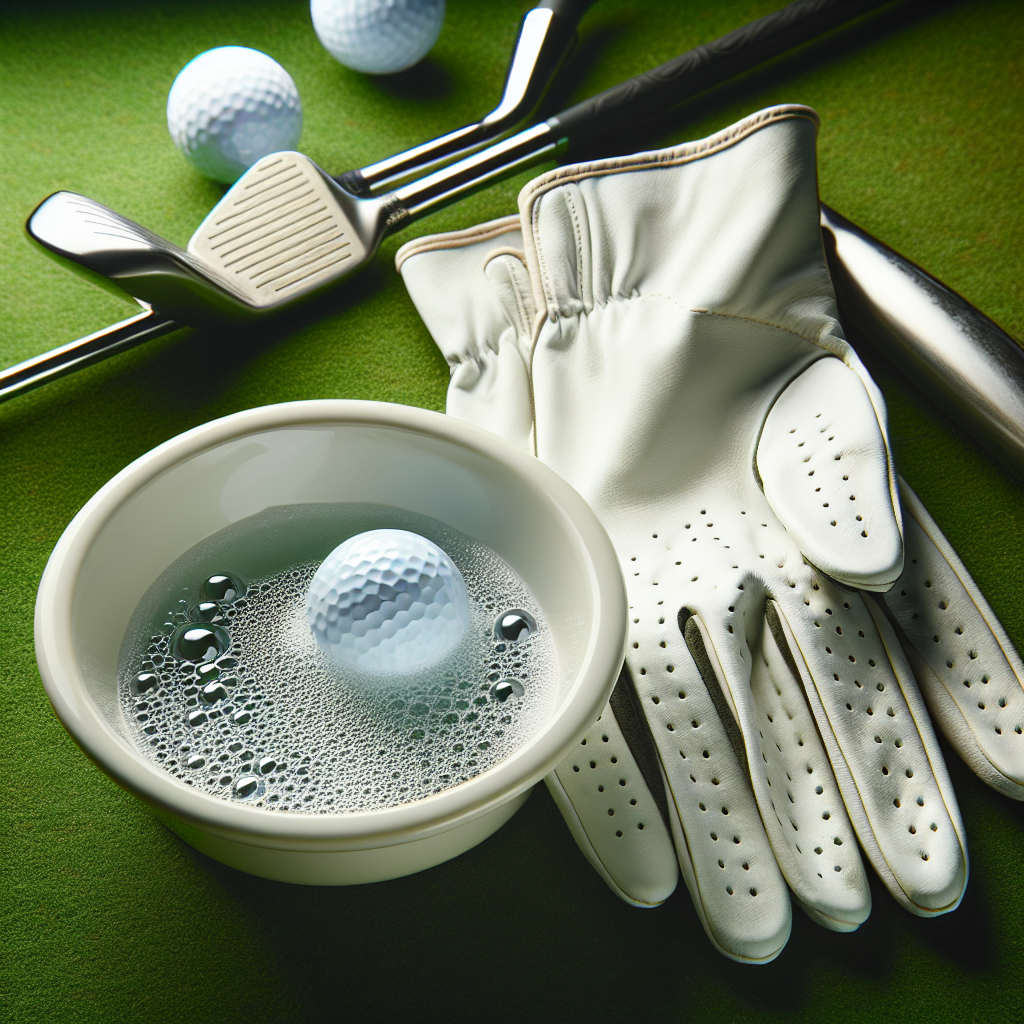
Tips to Extend the Lifespan of a Golf Glove
Alternating between gloves
To prolong a golf glove’s lifespan, we recommend alternating between two or more gloves. This gives each glove ample time to rest and dry out between uses.
Taking off the glove between shots
Removing the glove between shots allows it to dry and prevents excessive sweat from soaking into the fabric. This simple practice can considerably extend a glove’s lifespan.
Handling the golf glove with care
Lastly, handling the golf glove with care, by both putting it on and taking it off gently, will help retain its shape and maximize its lifespan.
Avoiding Common Mistakes while Washing Golf Gloves
Never bleaching a golf glove
Bleaching a golf glove can cause discoloration and weaken the glove’s fabric.
Avoiding high heat when drying
Drying a golf glove in high heat, like in a tumble dryer, can cause it to stiffen or shrink.
Not machine drying a golf glove
Opt for air drying the golf glove rather than machine drying as the latter can cause damage to the glove’s structure and materials.
By understanding these points of care and maintenance, we can considerably extend the lifespan of our golf gloves, and consequently, enhance our golf performance.
